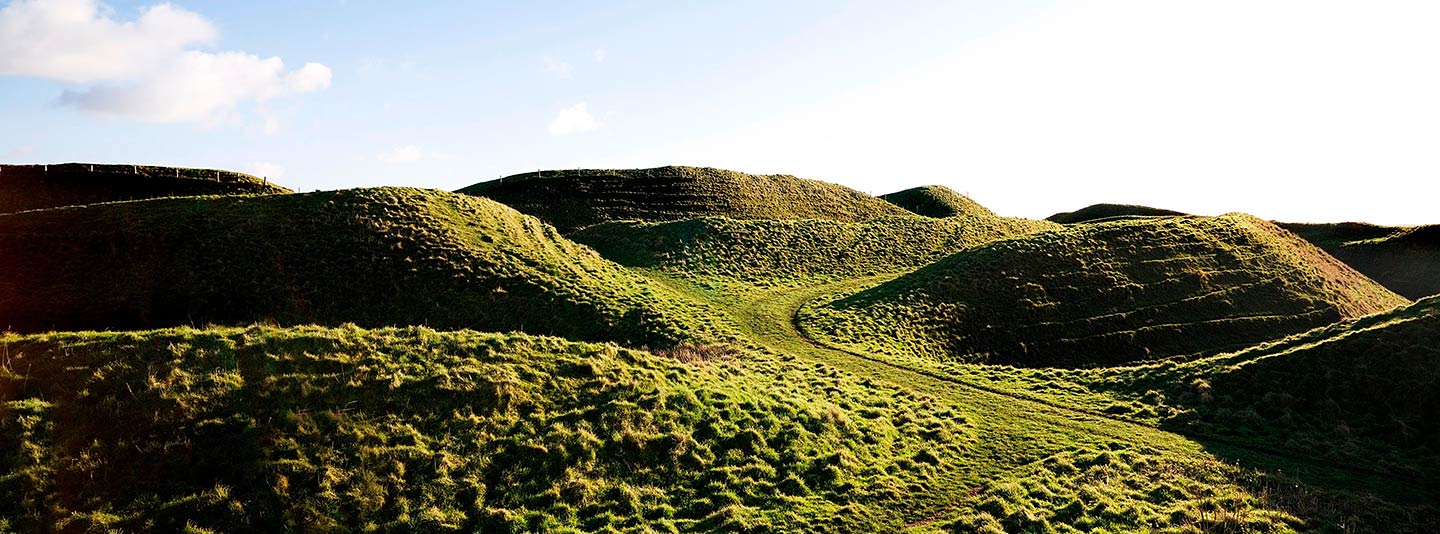Roman Invasion at Maiden Castle
Britain’s largest Iron Age hillfort was once regarded as a monument to the brutality of Roman invasion, but in fact its story may be rather more complicated.

IRON AND BONE
The great Iron Age hillforts that dot the downland of southern England give the impression of a warlike time in which well-defended refuges were essential. Yet archaeologists have only occasionally found direct evidence for interpersonal violence at these sites, prompting a reassessment of many as statements of elite power, rather than practical defence.
One exception is Maiden Castle in Dorset, the largest hillfort in Britain, where a number of skeletons with evidence of wounds were discovered by the renowned archaeologist Sir Mortimer Wheeler in the 1930s. When the artist Paul Nash visited Wheeler’s excavation he evocatively described how ‘the sun beat down on the glinting white bones which were disposed in elegant clusters and sprays of blanched sprigs and branches’.
ROMAN WRECKAGE
While most of the hillforts in Wessex went out of use during the later Iron Age, Maiden Castle was still occupied at the time of the Roman conquest in AD 43. Wheeler was convinced the skeletons were direct evidence of this campaign. In the guidebook to the site he painted a vivid picture of the attack by the future emperor Vespasian’s legions on the outnumbered Britons:
Under the rising clouds of smoke the gates were stormed and the position carried … Men and women, young and old, were savagely cut down before the troops were called to heel … and the dazed inhabitants were left to bury the dead amongst the ashes of their huts.
One group of burials behind the inner bank of the eastern entrance outworks became known as the ‘war cemetery’. In his memoir Wheeler recounted how:
one skull showed the square piercing of a quadrangular Roman ballista-bolt, whilst another skeleton – most vivid relic of all – had an iron arrow-head embedded deeply in a vertebra. This last unhappy warrior, as he lay grievously wounded, had been finished off by a cut to the head.
QUESTIONING THE EVIDENCE
But many archaeologists are now sceptical of Wheeler’s evocative account. Work on a different area of the site in the 1980s questioned the evidence for a direct Roman assault on Maiden Castle.
It suggested that signs of burning in the houses probably resulted from ironworking, while the arrowheads found around the site may have belonged to the Iron Age inhabitants. Moreover, the skeletons were buried carefully, not with the haste intimated in Wheeler’s account.
DANGEROUS LIVES
On the other hand, re-analysis of the human remains has found even more evidence for violence in the form of fractures, and injuries from projectiles and sharp weapons, suffered by adults and young people of both sexes. In fact, three-quarters of the late Iron Age individuals buried around the site – not just those in the ‘war cemetery’ – had met a violent death. No other group of Iron Age burials in Dorset reflects such brutality.
It remains uncertain, however, how many of these people perished fighting the Romans, rather than one another. Evidence of healed wounds shows that some had been victims of violent encounters throughout their lives.
In other words, Wheeler’s interpretation tells only part of the story. Indeed, it seems likely that many of his skeletons were victims of deadly events in the pre-Roman period, offering a rare insight into the dangers of life before – as well as during – the Roman invasion.
By Jonathan Last